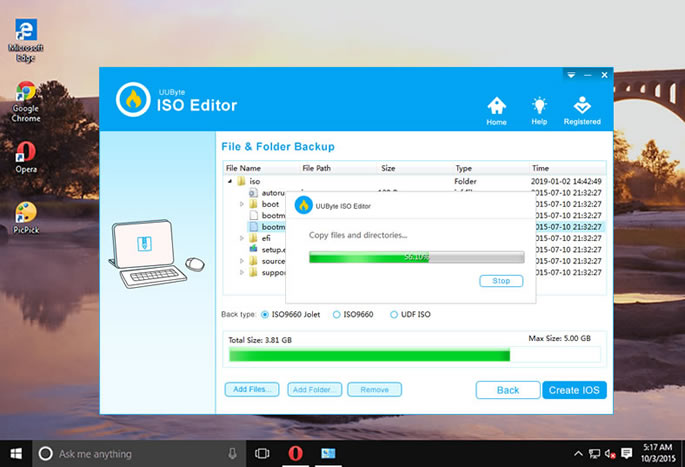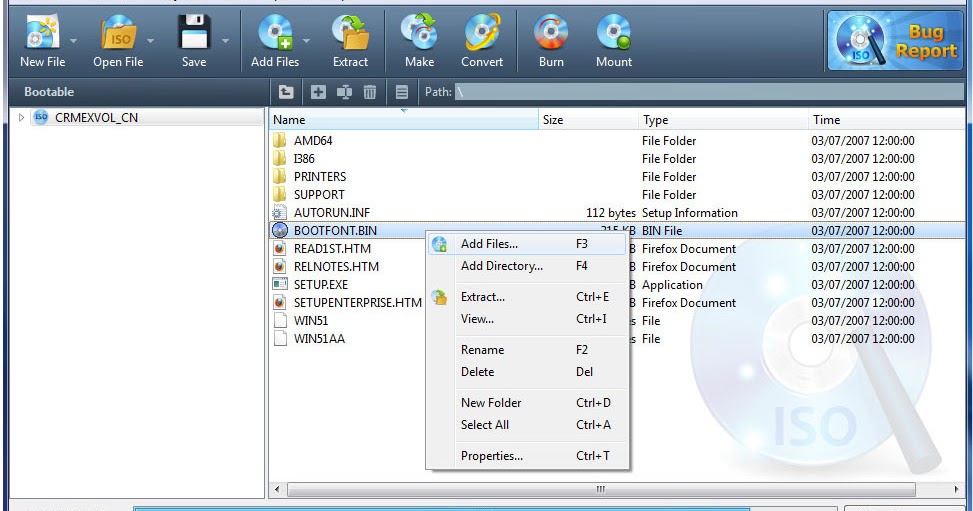


The ISO Extraction function in UUbyte ISO Editor allows you to easily view and pull out anything you need from an ISO image file. If you don’t want to actually burn an ISO file to a disc or USB storage device, most compression/decompression software programs, like the free Rufus, 7-Zip and PeaZip programs, will extract the contents of an ISO file to a folder. This ISO compilation process is made easy in this versatile product, and you can be done in no time. The ISO Creation module is meant to be used to create ISO files from scratch, whether it’s bootable or non-bootable files. The most common reason to build an ISO image is if you’re interested in backing up a software installation disc or even a DVD or Blu-ray movie. In a few minutes, your Windows 10 bootable USB is ready for use. When you copy the contents within the ISO file onto the drive, you’ll get the same files, folders, and properties as the original disc onto the drive.Īll you need to do is install the application on your computer, get your ISO file downloaded and ready, insert a USB drive, select the drive and the ISO file in the software interface, and hit the Burn button. The most common way to make use of an ISO file is to burn it to a CD, DVD, or BD disc. However, we also provide a single-click direct link to Windows ISO files from our website which is completely safe and secure.Īn ISO Editor like UUbyte provides us with the ultimate toolkit to create bootable USB and edit, create, and extract ISO images.

We do all this stuff through an ISO Editor. In the same way, you can download Windows 10 ISO files or download Windows 11 ISO files legally for free. The mention of Windows 11 ISO, for example, is a safe and legal way to upgrade from Windows 10 to the newest Windows 11 Operating System. img a try too.We’ve listed, reviewed, and talked so much about the ISO Image Files. You you can actually mount virtually any other disk image type with hdiutil as well, so give. For example, ~/Downloads/sample.isoĪfter the checksum is completed, your ISO will appear mounted on your Mac OS X desktop – that’s it. With sample.iso being the path to the image you want to mount. In the Terminal type the following command:

Mount ISO with Mac OS X command lineĪnother option is to mount an ISO using the command line on Mac. Ejecting the ISO is done by selecting the mounted image and dragging it to the trash, or by hitting Command + E keys with the ISO selected in the Finder of Mac OS X. You can then burn the ISO if needed, or just use it as a mounted disc image as needed. Yes, this works for other disk image files too (dmg, img, etc). The ISO should now appear mounted on the Mac OS desktop. After you have launched Disk Utility, navigate from the Disk Utility menu down to “Open Image File” and select your ISO file. You can mount ISO images in Mac OS X by using Disk Utility, located in the /Applications/Utilities/ directory.


 0 kommentar(er)
0 kommentar(er)
